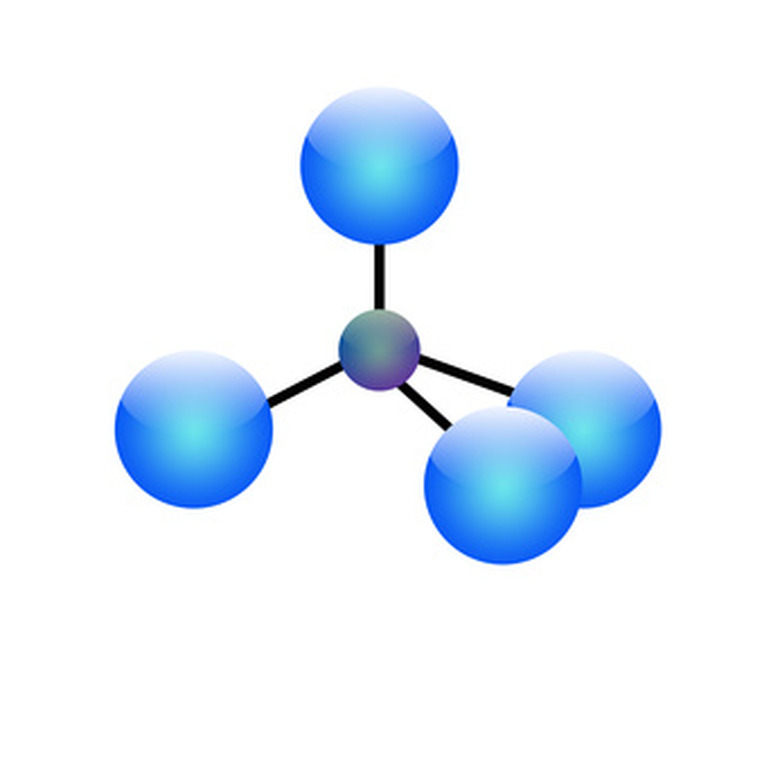How To Make A Model Of The Neon Atom
Sir William Ramsay and Morris Travers discovered the element neon in 1898. Its name is derived from the Greek word "neos," meaning "new." Neon is a gas commonly used in advertising signs, high voltage indicators, lighting arrestors, gas lasers and other commercial uses. Making a model of a neon atom can help you or your students understand the complexities of subatomic particles. You can construct a model of the neon atom using commonly available materials.
Step 1
Find the number of electrons that the element neon contains. Neon, or Ne, is number ten on the periodic table of elements. Locate the electron shell information in the Neon atom's data block on the periodic table. The first energy ring has two electrons in it. The second energy ring has eight electrons in it, making a total of 10 electrons.
Step 2
Use the periodic table to find out how many protons and neutrons the neon atom contains. The periodic table shows that the Ne atom has 10 protons and 10 neutrons.
Step 3
Paint the polystyrene foam balls. Use blue paint on the 10 1-inch foam balls to represent electrons. Use red paint on 10 2-inch foam balls to represent protons. Use green paint on 10 2-inch foam balls to represent neutrons.
Step 4
Cut two 4-inch and eight 8-inch sections from the bamboo skewers using a pair of 6-inch scissors. Insert one skewer into each of the 10 blue balls, or electrons, and fasten each to the ball with a drop of white glue. Do not poke the skewer all the way though the ball. The two 4-inch skewers with the blue foam balls represents the first energy ring, the eight 8-inch skewers with the blue foam balls represents the second energy ring.
Step 5
Glue the 10 red balls, or protons, and 10 green balls, or neutrons, together into the shape of a ball. You can glue the balls into any order you wish, but an even mix of colors looks best. The actual arrangement of protons and neutrons in an atom are constantly moving and have no set pattern or order. This piece will be used as the nucleus of your atom model.
Step 6
Attach the electrons to the nucleus using bamboo skewers. You can arrange the electrons in any configuration you wish. For example, you can arrange the electrons to resemble the spokes of a wheel or uniformly to resemble a ball.
Things Needed
- Periodic table of the elements
- 20 2-inch polystyrene foam balls
- 10 1-inch polystyrene foam balls
- Blue acrylic paint
- Red acrylic paint
- Green acrylic paint
- 1/2-inch paint brush
- Eight 12-inch bamboo skewers
- 6-inch scissors
- White glue
TL;DR (Too Long; Didn't Read)
You can use balls of string, ping-pong balls or any other round objects in place of foam balls. You can use drinking straws, wire or other materials in place of the bamboo skewers.
Warning
Some paints may react negatively when used on polystyrene foam. If you are unsure of the paint, test the paint on a small section of a foam ball before painting all of the balls.
References
- "Physics 2nd Edition"; John D. Cutnell and Kenneth W Johnson; 1992
- "Chemistry 4th Edition"; Raymond Chang; 1991
- Jefferson Lab: The Periodic Table of Elements
Cite This Article
MLA
Schaefer, Michelle. "How To Make A Model Of The Neon Atom" sciencing.com, https://www.sciencing.com/make-model-neon-atom-7734781/. 24 April 2017.
APA
Schaefer, Michelle. (2017, April 24). How To Make A Model Of The Neon Atom. sciencing.com. Retrieved from https://www.sciencing.com/make-model-neon-atom-7734781/
Chicago
Schaefer, Michelle. How To Make A Model Of The Neon Atom last modified March 24, 2022. https://www.sciencing.com/make-model-neon-atom-7734781/
